Abstract
OBJECTIVE: The consensus of opinion suggests that when assessing measurement agreement, the most appropriate statistic to report is the "95% limits of agreement". The precise form that this interval takes depends on whether a positive relation exists between the differences in measurement methods (errors) and the size of the measurements--that is, heteroscedastic errors. If a positive and significant relation exists, the recommended procedure is to report "the ratio limits of agreement" using log transformed measurements. This study assessed the prevalence of heteroscedastic errors when investigating measurement agreement of variables recorded on a ratio scale in sports medicine and sports science. METHODS: Measurement agreement (or repeatability) was assessed in 13 studies (providing 23 examples) conducted in the Centre for Sport and Exercise Sciences at Liverpool John Moores University over the past five years. RESULTS: The correlation between the absolute differences and the mean was positive in all 23 examples (median r = 0.37), eight being significant (P < 0.05). In 21 of 23 examples analysed, the correlation was greater than the equivalent correlation using log transformed measurements (median r = 0.01). Based on a simple meta-analysis, the assumption that no relation exists between the measurement differences and the size of measurement must be rejected (P < 0.001). CONCLUSIONS: When assessing measurement agreement of variables recorded on a ratio scale in sports medicine and sports science, this study (23 examples) provides strong evidence that heteroscedastic errors are the norm. If the correlation between the absolute measurement differences and the means is positive (but not necessarily significant) and greater than the equivalent correlation using log transformed measurements, the authors recommend reporting the "ratio limits of agreement".
Full text
PDF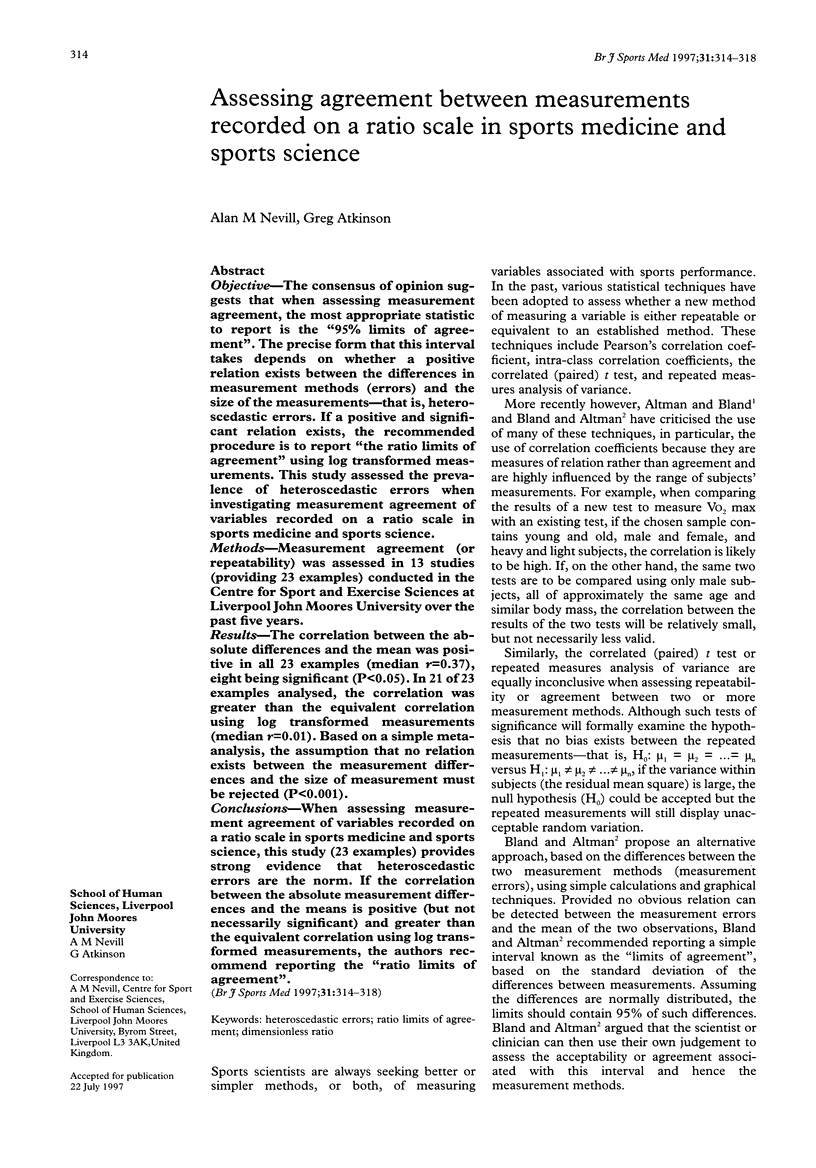
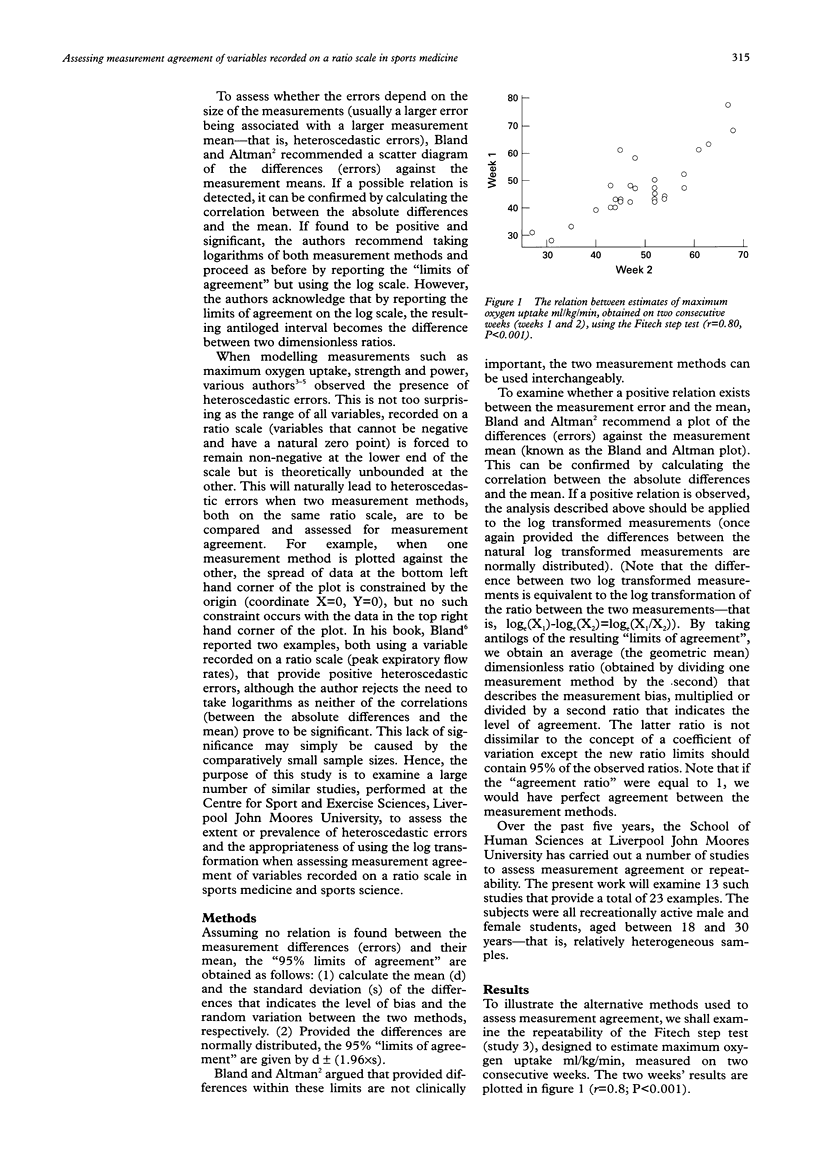
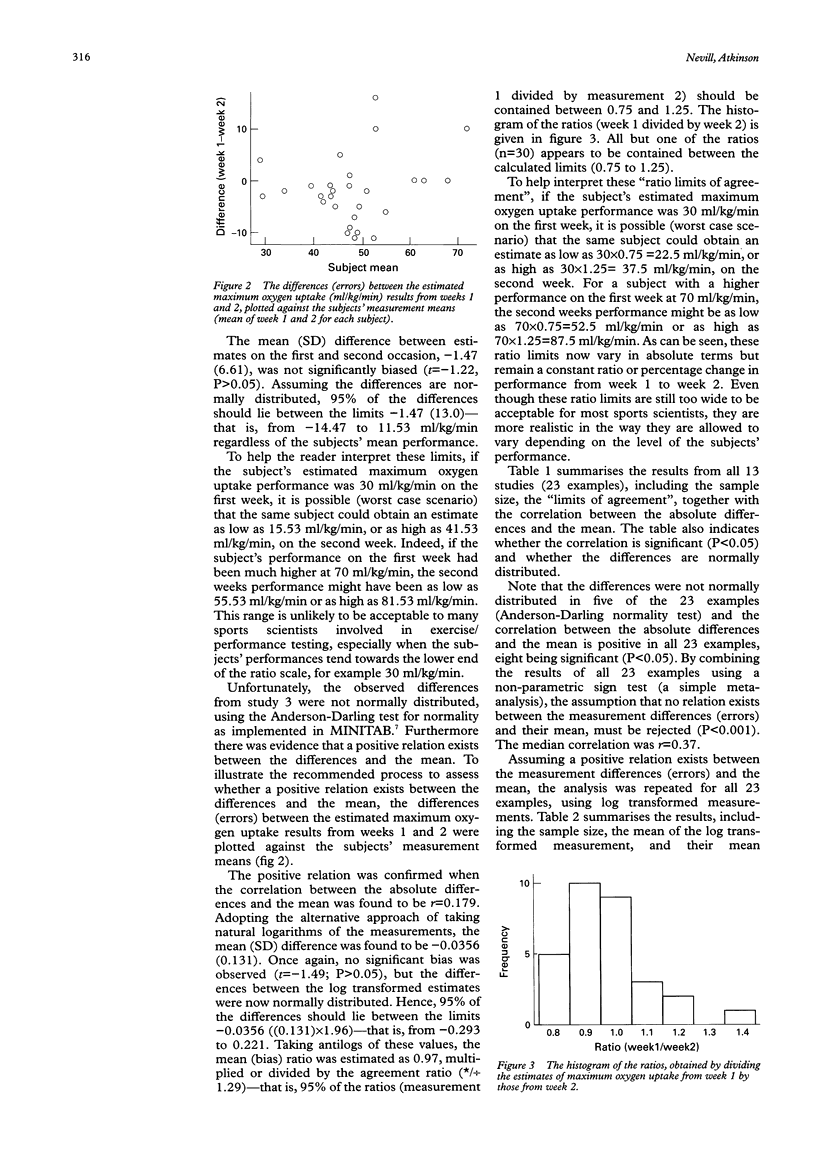
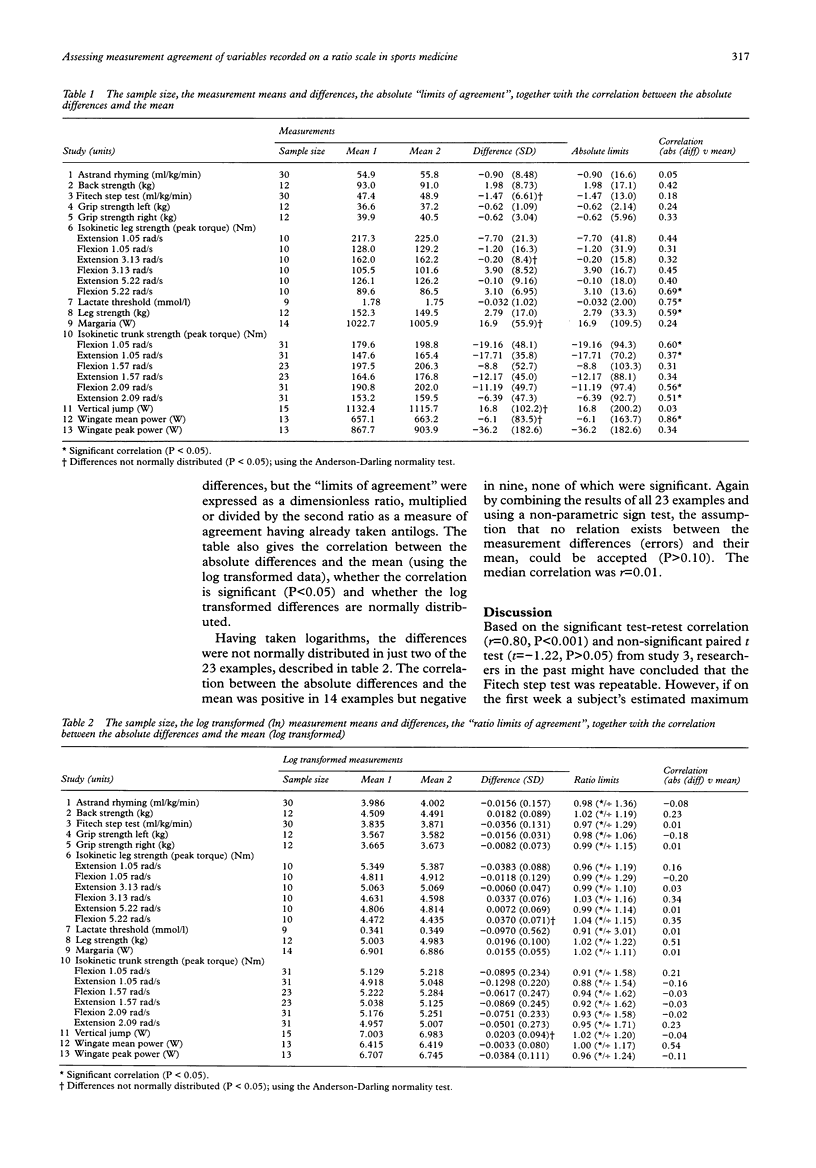
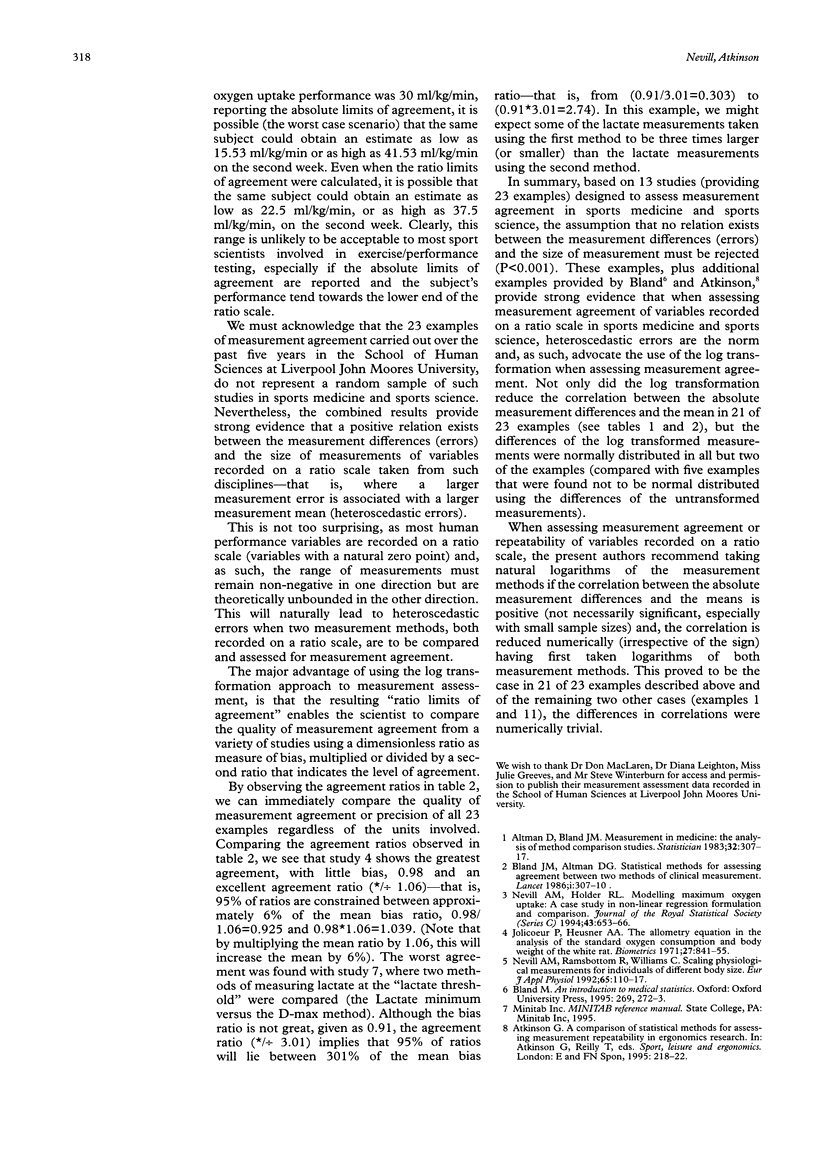
Selected References
These references are in PubMed. This may not be the complete list of references from this article.
- Bland J. M., Altman D. G. Statistical methods for assessing agreement between two methods of clinical measurement. Lancet. 1986 Feb 8;1(8476):307–310. [PubMed] [Google Scholar]


